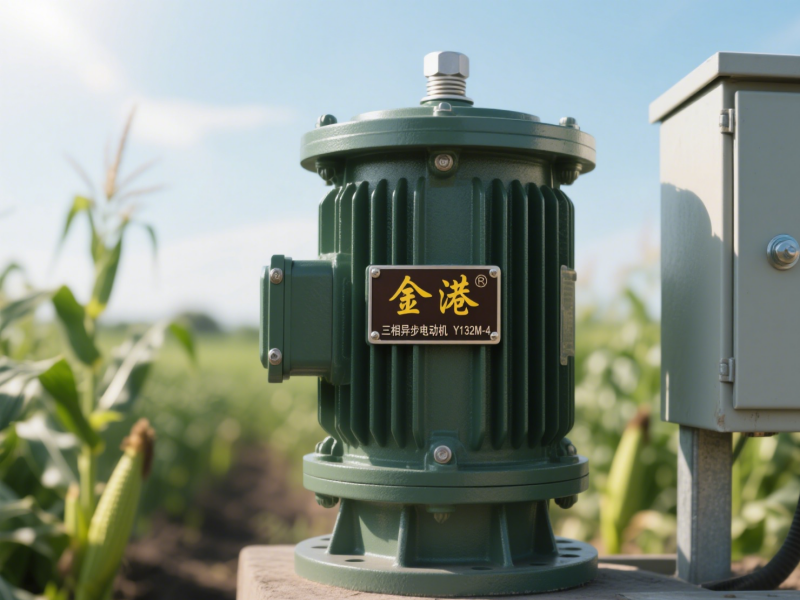Advantages of three-phase asynchronous motors in agricultural motors compared to single-phase motors
In the field of agricultural motors, the advantages of three-phase asynchronous motors over single-phase motors are mainly reflected in adaptability, performance stability, efficiency, and durability. These advantages are highly consistent with the large-scale, high-intensity, and complex environment requirements of agricultural production, as follows:
1.Broader Power Range, Suitable for Large Agricultural Machinery
Single-phase motors, limited by the power characteristics of single-phase power, typically cannot exceed 3kW. These motors are only suitable for driving small agricultural equipment (such as household sprayers, portable pulverizers, and small water pumps), meeting the needs of small farmers for occasional operations.
Three-phase asynchronous motors offer a power range extending from a few hundred watts to tens of kilowatts, making them capable of easily driving large agricultural machinery such as combine harvesters, high-power irrigation pumps (for deep well pumping), large threshers, and feed mixers. They fully meet the high-power demands of large-scale agricultural production.
2.More stable operation with minimal torque fluctuation.
Single-phase motors have a pulsating magnetic field, resulting in large torque fluctuations during operation, which can easily cause vibration and noise. Long-term operation can accelerate the wear of agricultural machinery components (such as shredder blades and water pump impellers).
Three-phase asynchronous motors generate a rotating magnetic field using symmetrical three-phase currents. This provides stable torque output, low vibration and noise during operation, and reduces vibration-related failures in agricultural machinery. They are particularly suitable for equipment that requires long, continuous operation (such as irrigation pumps and greenhouse ventilators).
3.Higher Efficiency and Long-Term Energy Saving
At the same power level, the energy conversion efficiency of three-phase asynchronous motors (typically 80%-90%) is significantly higher than that of single-phase motors (approximately 70%-80%).
In agricultural production, equipment such as irrigation, ventilation, and feed processing often requires long hours of operation (for example, irrigation in summer may run for over 10 hours per day). The high efficiency of three-phase asynchronous motors directly reduces energy consumption, saving farmers significant electricity costs over the long term.
4.Stronger overload capacity, adaptable to complex operating scenarios
Agricultural equipment often experiences sudden load fluctuations, such as a crusher suddenly encountering hard objects, a water pump sucking in mud and sand, or a harvester encountering dense straw. These situations require the motor to withstand short-term overloads.
Three-phase asynchronous motors offer superior overload tolerance compared to single-phase motors (typically withstanding short-term surges of 1.5-2 times the rated load). They are also less likely to burn out due to momentary overloads, reducing operational interruptions caused by motor failures.
5.More durable structure and lower maintenance costs.
While both are asynchronous motors, the symmetrical distribution of the three-phase windings in three-phase asynchronous motors provides better heat dissipation (larger motors can be equipped with more efficient cooling fans). They are also less susceptible to damage from overheating in high-temperature, dusty agricultural environments (such as summer field work and the dusty environment of feed mills).
For motors of the same power rating, three-phase asynchronous motors generally have a longer service life than single-phase motors. Their stable operation requires less frequent routine maintenance (such as cleaning and lubrication), making them suitable for rural areas with limited maintenance resources.
Summary
Three-phase asynchronous motors, with their advantages of high power adaptability, operational stability, high energy efficiency, and strong overload capacity, hold an irreplaceable position in large-scale agricultural production and driving large agricultural machinery. They are particularly well-suited for scenarios requiring long, high-intensity operations. Single-phase motors, on the other hand, offer greater flexibility only in small equipment requiring low power and sporadic operations. Therefore, in the process of modern agricultural mechanization, three-phase asynchronous motors are the core power choice for improving production efficiency and reducing long-term costs.




